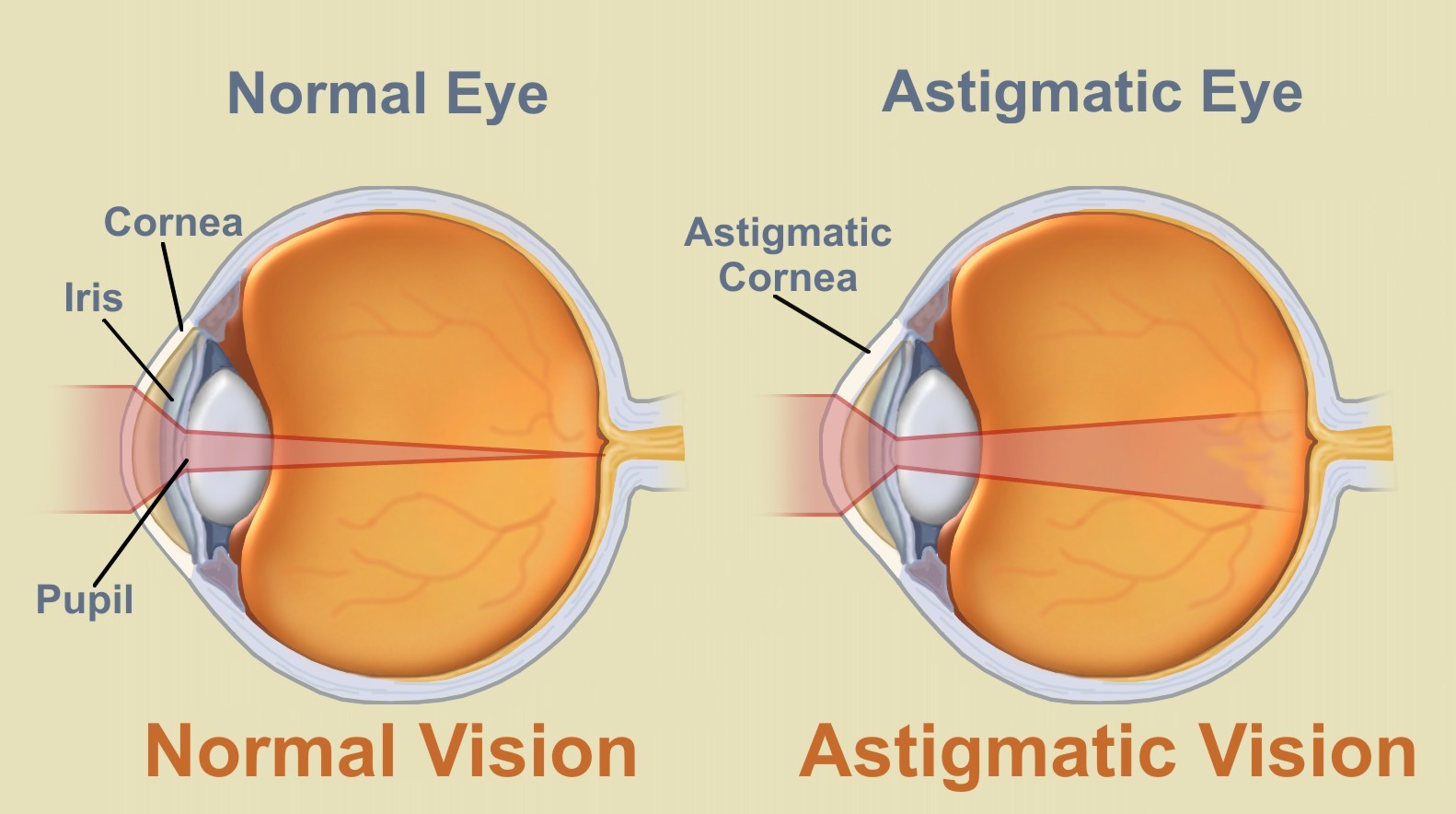 New Health Guide
New Health Guide
Astigmatism is a refractive error of the eye and is present in almost all people to some degree. Such limited amount of astigmatism neither impacts the vision of a person nor requires any treatment. The distinguishing feature of astigmatism is the uneven curvature of the lens or cornea of the eye which results in unclear vision. The problem in most people is because of some genetic reason and is present from the time of birth. Vision problem caused by the optical condition can be corrected by the use of glasses, contact lenses and laser eye surgery.

Naturally, eye is shaped like a sphere which allows light entering the eye to refract evenly. This uniform refraction of light results in a clear picture of the object. On the other hand, a person whose eye is affected by astigmatism has a blurred vision of all near and far objects. The reason for such vision is the cornea of such person which is more like the back of a spoon. When light enters, rather than forming a sharp image, it gets refracted more in one direction resulting in an unfocused image.
Astigmatism has two types: corneal and lenticular astigmatism. The corneal astigmatism is because of the abnormal shape of the cornea, whereas lenticular astigmatism is because of the abnormal shape of the lens. The result of both types of astigmatism is the same—an unclear and distorted image.
The main indication and symptoms of astigmatism are:
In case you find it difficult to carry out your day to day responsibilities because of your vision, you must consult an ophthalmologist. The eye doctor will examine your eye to diagnose whether you have astigmatism or not. Moreover, he will also identify the degree of astigmatism in your eye and will prescribe a mean to correct your vision.
People who have an optical problem like astigmatism need to get their eyes checked more consistently than usual. More frequent visits to an eye specialist are also important in case you have an eye problem like glaucoma or a disease like diabetes. The frequency of your visits should in any case be decided by your specialist.
There is no identified reason for astigmatism. It is basically an imperfection of the cornea or the lens and is present in most people at the time of birth. Little amount of imperfection of cornea or the lens is common in a number of people and they do not require any corrective measures for their vision. Almost all people with astigmatism have some hereditary reason for the eye defect, even though in some cases, the optical problem appears in childhood or early adulthood and not at the time of birth. Most people with the problem have it in both their eyes.
Astigmatism can be also caused by a condition called keratoconus. In addition to the disease, some injuries and infections can also results in astigmatism. In such conditions, astigmatism is asymmetrical.
In order to diagnose astigmatism in a patient, a number of measures are required to be determined which are found through a complete examination of the eye. The important aspects of eye examination include:
The tests examine a number of things and the information obtained from the tests is used by the optometrist to determine the degree of astigmatism in your eye. In addition, they also enable the optometrist to find out the power of lens to make your vision correct and clear.
In most cases of astigmatism, the degree of the problem is so less that there is no corrective measure required if there is no nearsightedness or farsightedness. In cases where astigmatism affects the routine life of a person, lenses or glasses can fix any degree of astigmatism and make the vision of the person clear and correct.
The use of lens or glass support clarity of vision by refracting the light to cancel out the effect of refractive error caused by astigmatism. The corrective lens used can both be in the form of a contact lens or a glass as both can equally solve the vision problem.
There is a certain degree of precaution that must be ensured while using contact lenses. First of all, contact lenses are not supposed to be used for a consistently long duration of time. Moreover, contact lens should always be cleaned properly before using.
Laser surgery treats astigmatism by correcting the shape of cornea. Your eye specialist will examine you to decide whether you can have a laser surgery or not. There are three different types of laser surgery being used today:
It is not appropriate to perform laser surgery if: